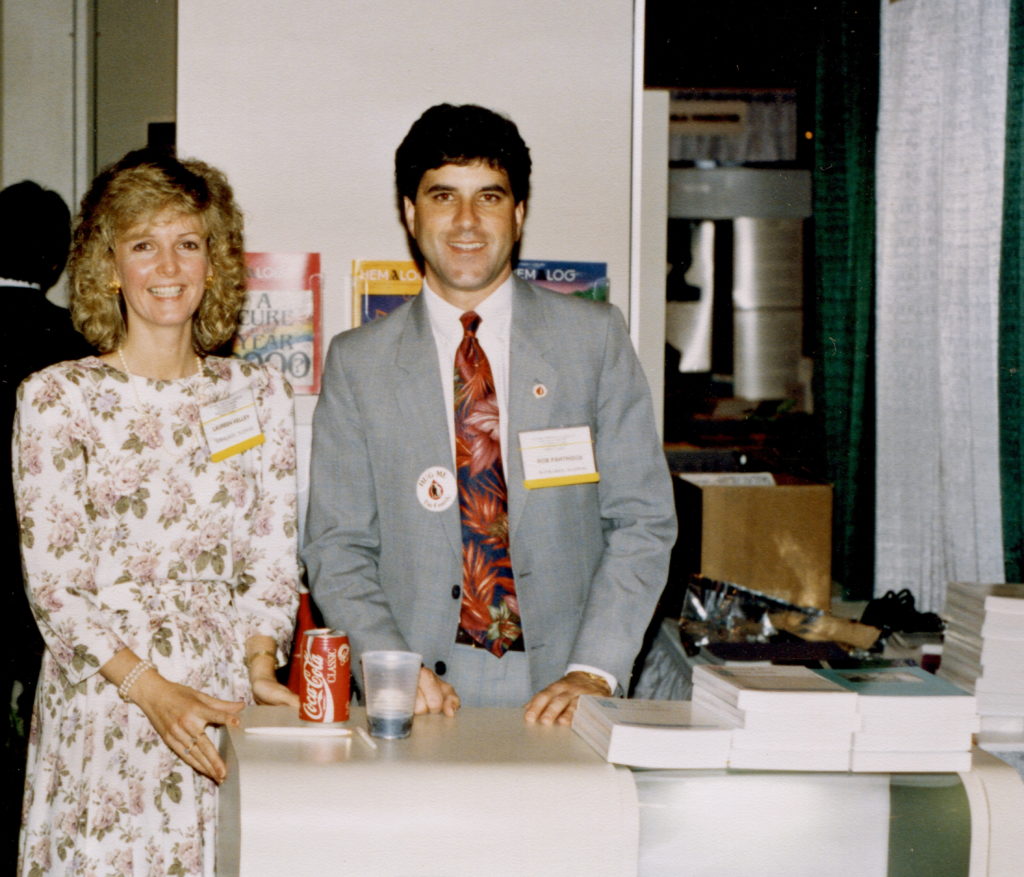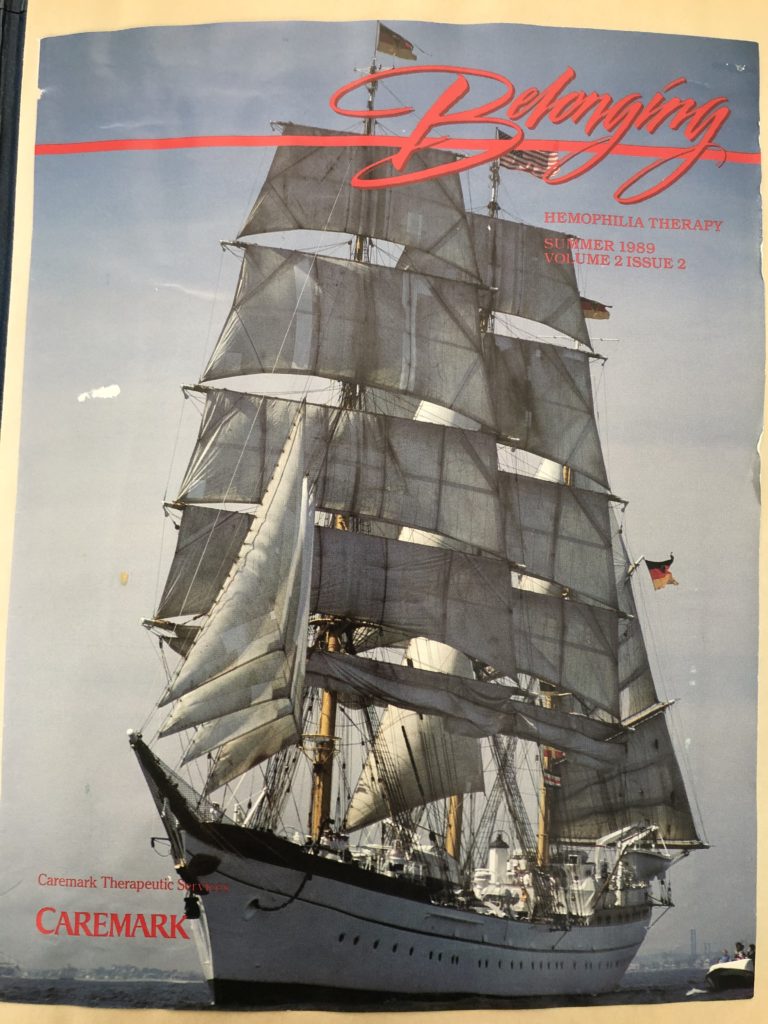I was sitting at my desk at work; it was 1989 and my had I learned a few things about managing hemophilia by now. I felt a burning desire that parents needed some sort of book, a book that would pair the wisdom of parents raising a child with hemophilia with the medical information we received from our HTC. Practical and in our language. Such a book didn’t exist. The internet wasn’t even dreamed of, and there were no cell phones or Google. We were stuck, each of us, in our own, dark, scary world of bleeds. ‘
I glanced through a magazine I had received from the Armour Pharmaceutical Company. It was light, filled with feel-good stories, and what I considered to be fluffy information, as if I couldn’t handle the truth about hemophilia. It talked down to me. I noticed a business reply card that I could fill out and give feedback to. I tore it out and gave HemaLog a rather scathing review. I felt better, and tossed it into the mail.
A few days later, at work, my phone rang. It was Rob Partridge, product manager of Monoclate-P, and he was very interested in what I had to say. He read my postcard. I didn’t know anyone would actually read it. I felt embarrassed and apologized. I didn’t mean to be so… honest? But he was fine with it. “This is what we want to hear; what do you need?” he asked. The million dollar question. “We need a book,” I sputtered. “A Dr. Spock book of how to raise these children.” I went on to tell him about our mishaps, and how we learned so much from other parents. I explained how we would glean our information from the parents. And my husband, as a process scientist and someone who had worked on recombinant factor, would handle the medical and scientific parts.

Rob loved the idea. He was new to his position, and no doubt he wanted to grab on to a unique opportunity and project. How to go about making this book? Who would write it?
“I will,” I offered. “I have the first chapter done already.”
One postcard and one phone call, and then one contract. Luckily, I had had a lot of experience with negotiations and contracts from work, and knew how to handle this part. We were in business!
It was late 1989 and the book would occupy much of the next 8 months. So would another project: I was pregnant! It was a challenge: I worked all day at a professional office, managing a client list, and sales of economic forecasts, then would drive to pick up my son, then come home, play with and feed him, then put him to bed at 8 pm. Then I got to work on my book. We only had clunky, green screen Compaq computers back then. Nothing like what we have today. I’d work till midnight, then get up and do it all over again. In between, there were hospital runs, bleeds, and the usual family events.
I was exhausted most of the time. But the conversations and stories I collected motivated me. I put an ad in Belonging, Caremark’s magazine for chronic disorders. My phone started ringing off the hook; and this was a corded phone, so I had to stay in one spot, and take notes. I’ll never forget: the first mom who called me was named Linda, had a factor IX deficiency son and had never in her life spoken to another parent of a child with hemophilia! I recorded her story on paper, while she poured out her feelings. An hour later, the phone rang again. Another Linda, another factor IX son! I put them both in touch with one another.

an avalanche of phone calls!
On it went; I had 50 phone calls in the first two weeks. Those 50 moms remain to this day some of my best friends in the community. And I’ve watched their sons grow up, and now have children of their own!
I was working too hard, burning the candle at both ends. I was at work one day in June, and was about 6 months pregnant. While I had gained about 50 pounds with my son, I hadn’t gained much with this pregnancy. I was on the phone with Mario Cuomo’s budget analyst for the state of New York, when my head felt like there was an axe in the middle of it. I joked that the number crunching was killing me, begged to be let go, hung up on my client and went home early. I couldn’t eat or drink anything for the next three days, and ended up in the ER, where I kept touching my head to see if it really was on fire. My temperature soared to over 103° as my blood pressure dropped to a dangerous level. I was transported to Brigham and Women’s in Boston by ambulance; it was that serious. They did a spinal tap, and put me in isolation. No one knew exactly what was wrong; they eventually diagnosed it as meningitis. I was scared for my unborn child. I was being pumped full of fluids and antibiotics. The next week was a blur, but I was finally sent home.
I was 6 months pregnant and weighed 114 pounds.
Three months later, I finished up the last edits on the book one night, and gave birth at 1 am, on my birthday, to a beautiful and healthy 8-and-a half pound baby girl. It was like having two babies born!

The book would be printed by Armour Pharmaceutical Company (now CSL Behring) in 1990, and remains the “bible” of hemophilia for so many families. We have always given the book away free of charge to parents. It was the first time so many voices of parents were heard directly; I had given them a voice to speak to other parents, with information I needed, and knew they needed.
I thought my life’s dream was done—I wrote a book! I went back to work at DRI/McGraw-Hill to sell more economic forecasts, never dreaming that this was only the beginning. My life would forever change with the birth of my son, and the birth of my book. (Order the 2016 version here!)
Next week: Whirlwind of Community Events and Another Book

